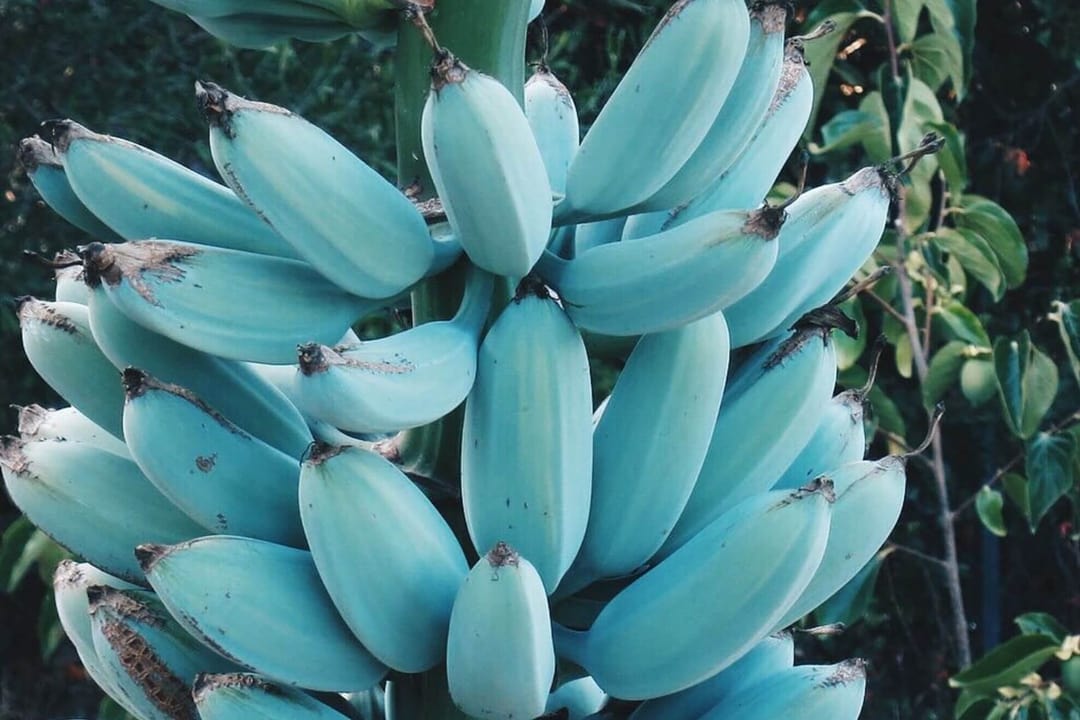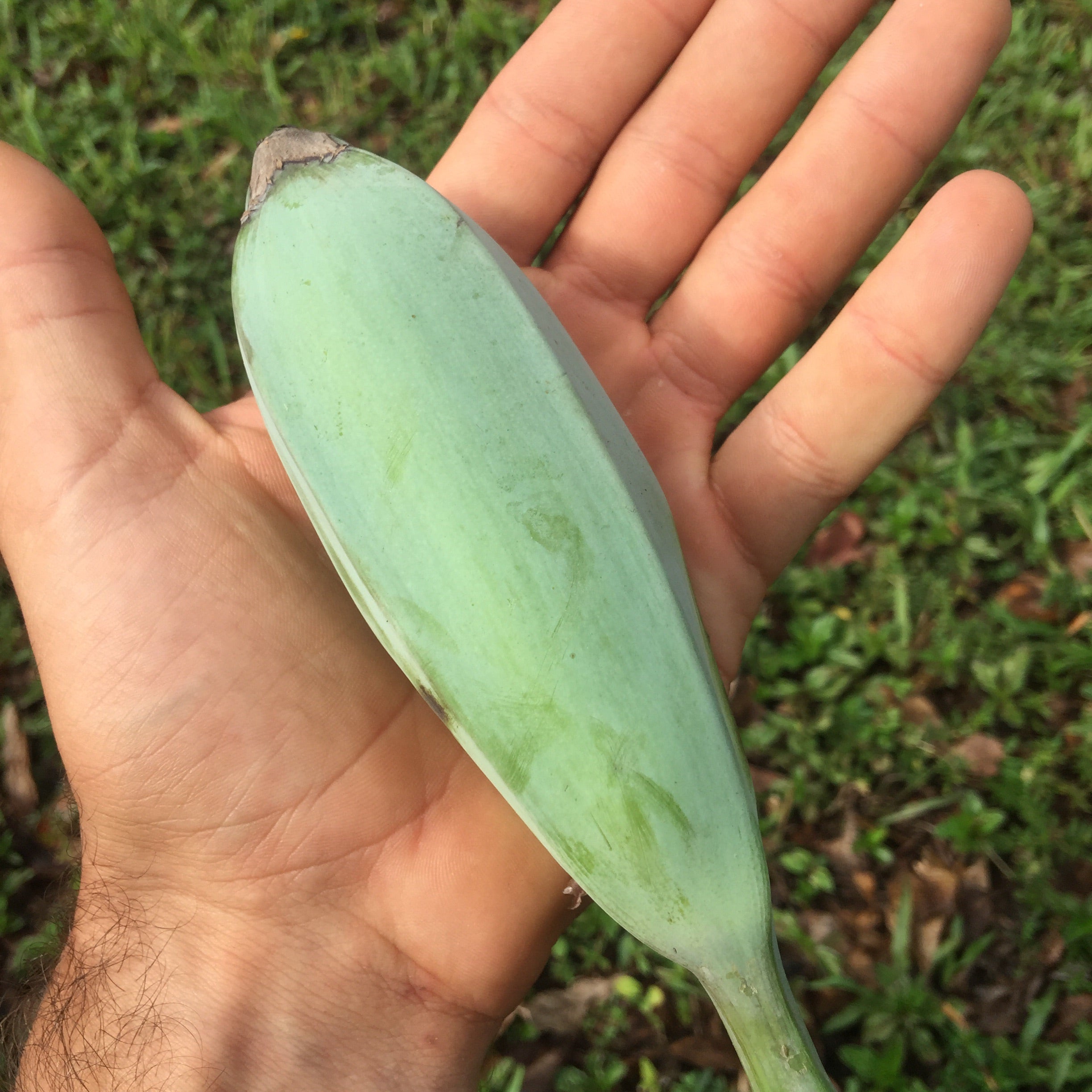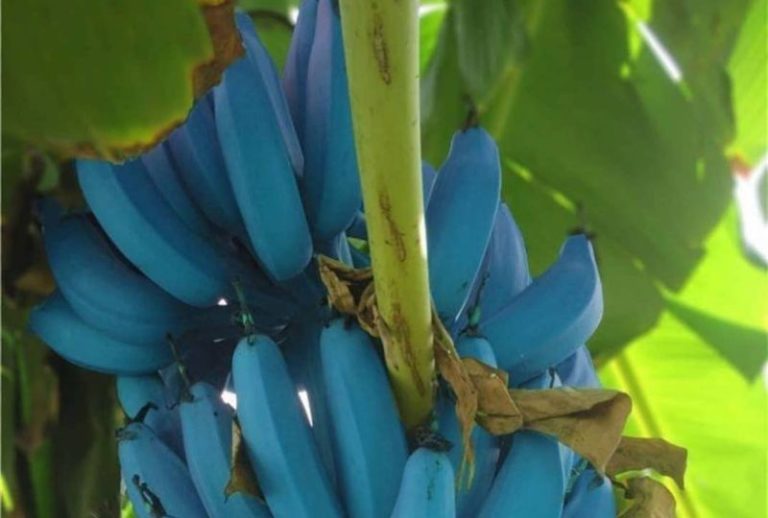

This plant is unique in that it is grown outdoors in U.S., as well as indoors in cooler regions. This species of plant is so exquisitely ornamental and intriguing, that it is often displayed in the lobbies of major hotels and restaurants in the tropics where it is famous for its giant leaves (up to 15 feet in length!) and hot pink flowers. The Blue Java Banana is also sometimes known as the “Blue Ice Cream Plant,” as well as the “Hilo Ice Cream Banana.” In addition to being striking to the eye, it is also a very opulent and luscious species of the Araceae family. One of the most popular houseplants for creating drama indoors is the Blue Java Banana. The humidity level should hover between 50 and 70 percent, and the Blue Java Banana should be watered when the soil feels dry to the touch. This plant appreciates a light surrounding that is around 75 to 100 watts per square meter, so it can thrive indoors.


The Blue Java Banana should not be exposed directly to sunlight, as the leaves will burn. This method protects the delicate leaves of the plant and also prevents the soil from breaking down. This means that the top inch of every pot must be filled with gravel. The Blue Java Banana has roots, just like all houseplants, but it will not survive having a single soil particle touching the surface of the roots.

The Blue Java Banana rarely grows taller than a foot in height, and it should be repotted every six to seven years to help it maintain a healthy growth cycle. Despite the appearance of the leaves, this is not a large plant. The leaves of this plant are long and dark green. The fruit of this plant is delicious and can be eaten at any stage in maturity, although some people prefer to wait until the fruit is fully ripe before eating it. Its subtle aroma isn’t its only asset: blue vanilla is entirely edible! So what’s blue about it? The name is a tribute to past locals of Reunion Island who used the adjective blue to describe a healthy plant.The Blue Java Banana, also known as the Ice Cream Banana, is a houseplant that originated in Southeast Asia, more than 2,000 years ago. The Escale Bleue, the sole supplier of this unique vanilla, pushes the refining process to six years for a limited edition. The bean, originating from Reunion Island, has been wowing great chefs (with a comfortable budget – count on nearly 1,000 per kilo) and has a long maturation period. However, blue vanilla is blue in name only. Blue vanilla, a plant from Reunion Island that symbolises good healthĪs for vanilla, you have surely heard of this variety.
#Blue java banana skin#
When ripe, you bite into a fruit whose skin is more like an aubergine while the flavour is closer to an apple. Their flowers take on a tubular shape that develop purplish-blue coloured fruits. There is also the blue apple, a climbing vine from the forests of Australia and Tasmania. A small tomato akin to a cocktail tomato, the OSU Blue was created in the early 2000s by an American research centre. You can grow a variety of blue-skinned tomatoes in your garden if the climate conditions are humid and do not go above 25☌. Blue tomato, blue apple…it’s a blue foods revolutionīlue food on your plate? While it can be surprising to see such a hue on foods other than blueberries and merlot grapes, it is not actually that rare. This strange banana is extremely intriguing and there is growing enthusiasm for it on social media, where you can see its mouthwatering and unique colour making the rounds. This banana also grows in Hawaii where people call it the “ice cream banana.” It definitely piques the interest of food lovers! (c) Instagram (c) Instagram / (c) Dailymotion Where can you buy the Blue Java?ĭue to climate change and repeated snow events, it is entirely possible to imagine growing this variety of blue banana in other zones of the planet where they had not previously been growing. While the flesh of this banana is similar to other bananas in its pale yellow colour, the smooth texture has a taste that will surprise any sweet tooth with its vanilla flavours. There is more to this fruit than simply its blue peel and its resistance to cold. It can grow in temperatures as low as -7☌! The delicious vanilla taste of the “ice cream banana” While the classic banana varieties that we know such as the Musa balbisiana and Musa acuminata need heat and are grown in tropical places, the Blue Java is more resistant. These bananas grow in humid and sunny places in Asia like Fiji, the Philippines and Southeast Asia. The blue banana, a treasure from Asia and Oceania While blue isn’t a colour that shows up often in nature, several blue fruits and plants exist, tantalising the palates of foodies everywhere. Appearances can be deceiving: the Blue Java, more commonly called the “blue banana,” is a natural fruit, despite what you might think based on its lovely bubble-gum-blue colour.


 0 kommentar(er)
0 kommentar(er)
